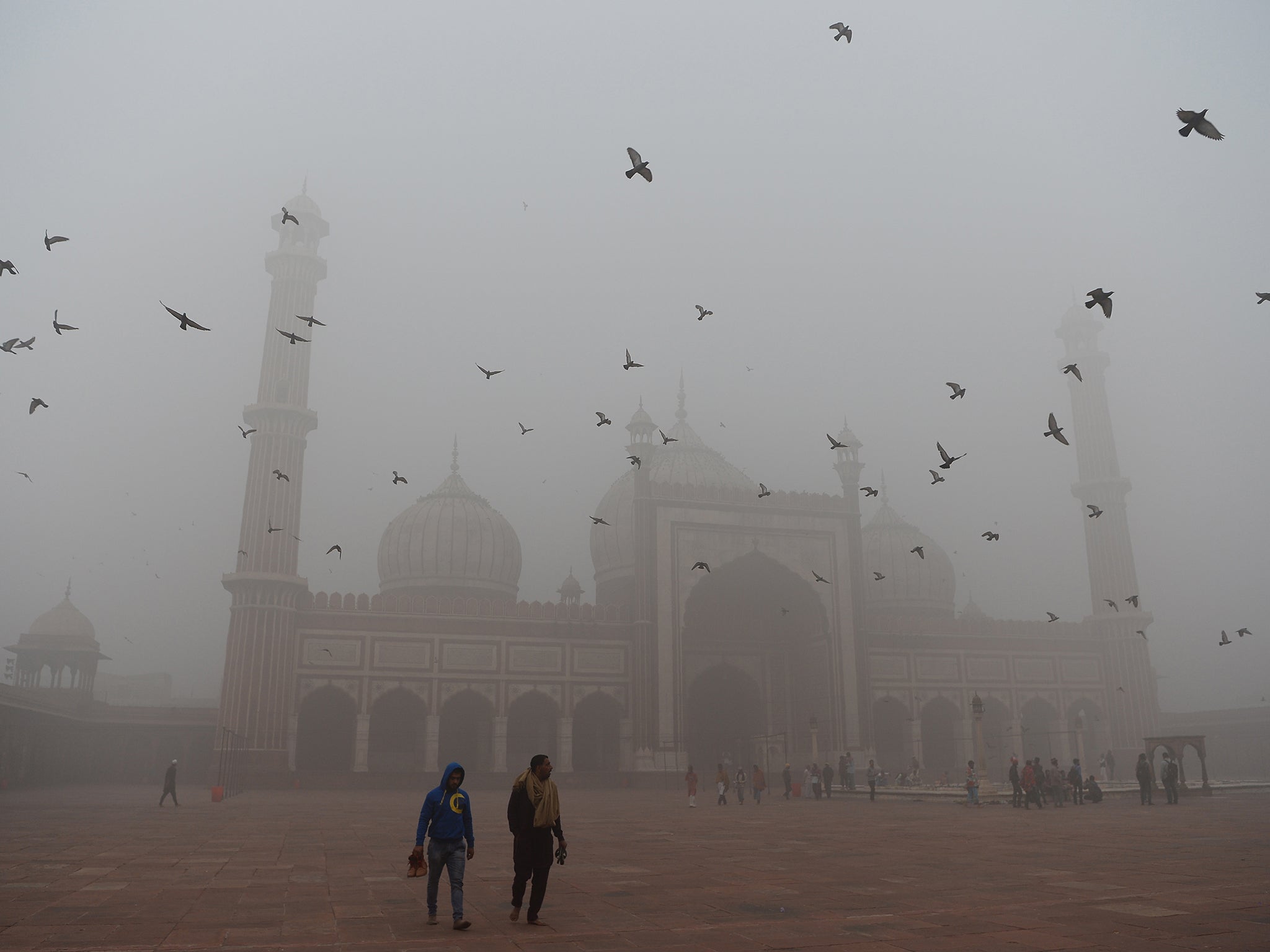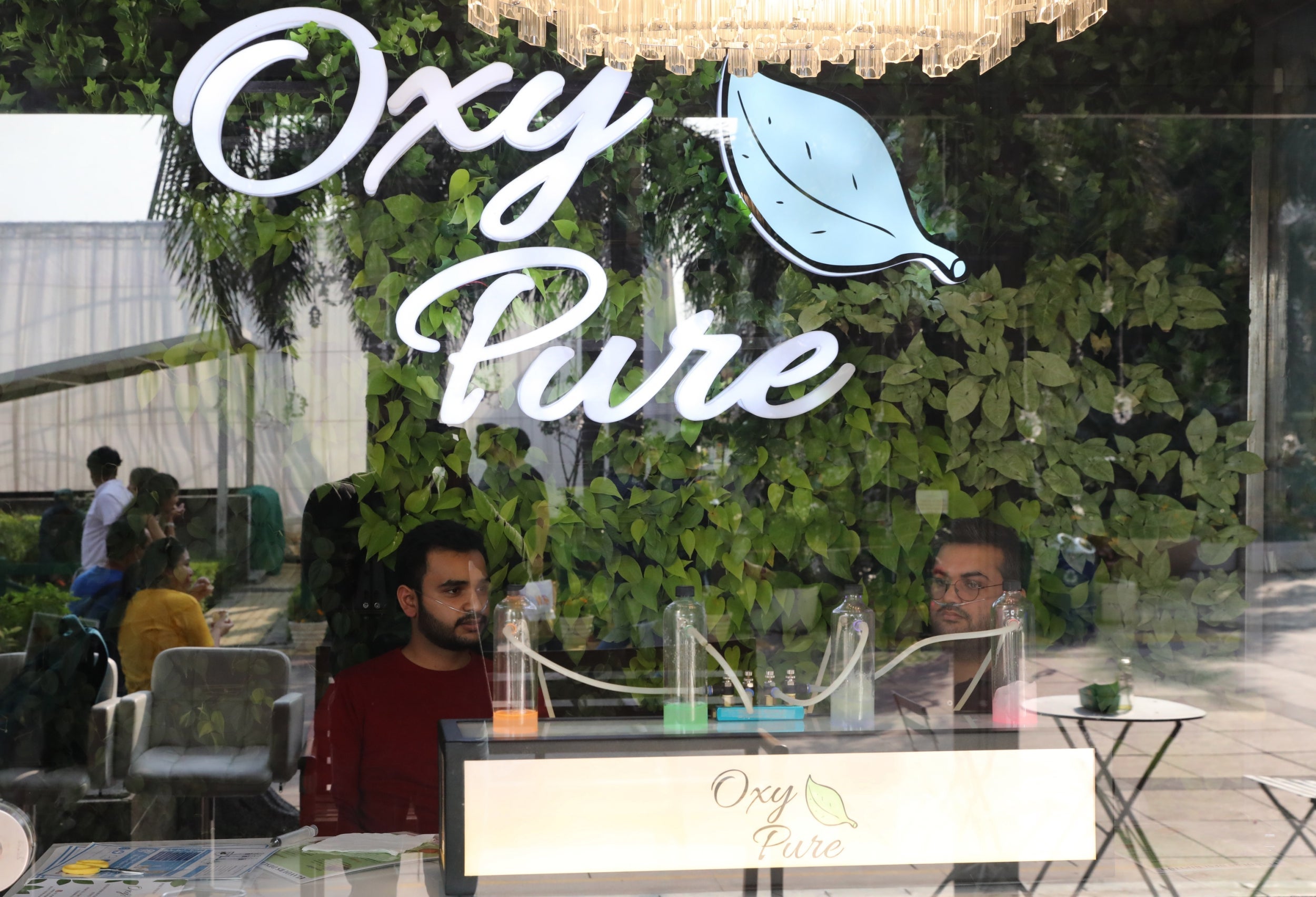Delhi residents turn to oxygen bar as toxic smog engulfs city
Bar opens as pollution levels hit more than 30 times safe levels in the capital
Your support helps us to tell the story
From reproductive rights to climate change to Big Tech, The Independent is on the ground when the story is developing. Whether it's investigating the financials of Elon Musk's pro-Trump PAC or producing our latest documentary, 'The A Word', which shines a light on the American women fighting for reproductive rights, we know how important it is to parse out the facts from the messaging.
At such a critical moment in US history, we need reporters on the ground. Your donation allows us to keep sending journalists to speak to both sides of the story.
The Independent is trusted by Americans across the entire political spectrum. And unlike many other quality news outlets, we choose not to lock Americans out of our reporting and analysis with paywalls. We believe quality journalism should be available to everyone, paid for by those who can afford it.
Your support makes all the difference.As air pollution shot up to dangerous levels across India, underscoring an already dire public health crisis, a crowd descended on a small shop in New Delhi for a novel solution: a 15-minute hit of clean oxygen.
At Oxy Pure, a self-styled “oxygen bar”, customers strapped tubes to their noses and inhaled scents of lavender, lemon grass or spearmint.
In the absence of other options, Lisa Dwivedi, a Ukrainian living in the city, said she came to the bar because she was fed up with having itchy eyes, a runny nose and a swollen throat.
“I don’t know if it’s psychological, but it makes me feel good to know I am inhaling pure oxygen, if only for 15 minutes,” she said.
The air pollution crisis in India has become so severe that officials in the capital declared a public health emergency earlier this month, when levels of deadly particulate matter rose a few dozen times above what the World Health Organisation considers safe.
Doctors are reporting a surge of patients with severe respiratory problems. This week, New Delhi’s government shut all primary schools for a second time this month because of pollution in the capital region, home to more than 46 million people.
But despite air so scary it may be causing brain damage in children, some central government officials have either resisted acknowledging the problem, which has persisted in India for years, or minimised its severity.
During an especially poisonous day, when levels of PM 2.5, tiny, cancer-linked particulate matter, rose to some 60 times the safe limit in parts of the capital, Harsh Vardhan, India’s health minister, recommended eating carrots to fight any harmful effects.
Another senior lawmaker criticised those who tried to stop farmers from burning their crops and instead suggested praying to the Hindu god of rain for relief.
So far this month, Prime Minister Narendra Modi has refrained from publicly commenting on the air pollution. His office recently set up a panel to look into it, but a high-level parliamentary meeting Friday about the pollution was cancelled because hardly any officials showed up, according to Indian news outlets.
“People are dying, and it cannot happen in a civilised country,” a bench of Supreme Court judges said this month about the pollution. “We will not tolerate this. We are making a mockery of everything.”
With no imminent solutions, some Indians have tried to step in — with solutions like the oxygen bar.

As winds slow during winter months and farmers burn crops to make room for a new harvest, dirty air settles over India’s cities, mixing with construction dust, power plant emissions and fumes from people bursting fireworks to celebrate festivals.
Many Indians have become fatalistic about the government taking tougher steps to clean the air, if they even know how dangerous it has become.
Without consistent and strong public messaging, pollution masks are still uncommon in India, and those who wear them are sometimes laughed at. This month, people waded into the capital’s stretch of the Yamuna River, which is largely untreated sewage, to wash, clean utensils and take selfies with icebergs of foam formed by industrial waste.
Despite the second government shutdown of schools, which lasted from two days, a nonprofit organisation sponsored an outdoor run for children.
Hundreds of people participated, and event banners bore the logo for the state-owned Life Insurance Corp of India.

During parts of November, officials in New Delhi have tried to lessen the pollution by restricting the use of private vehicles on alternating days, allowing only cars with odd-number license plates to drive on odd dates and cars with even-numbered plates on even-numbered dates.
But efforts like this one appeared to have a marginal effect in improving the air, which remained “severe” throughout the capital this week, according to data from the Delhi Pollution Control Committee.
For Indians worried about the air, options have largely been restricted to buying purifiers, sealing cracks in their homes with blankets and towels, or leaving toxic cities entirely.
India’s poorest residents have no choice but to sleep outside in the fog.
At Oxy Pure, which is in Select Citywalk, a more upscale mall in New Delhi, customers pay £3 to £4.60 for 15 minutes of oxygen carried through a nasal cannula. They can choose among seven scents — including eucalyptus, peppermint and cinnamon. Oxy Pure has introduced a “pollution special”: five sessions for the price of four.
The owner, Aryavir Kumar, who originally worked as a hotelier, said he did not make a profit from the business, which opened in May. But he plans to open locations in the capital’s airport, and in the cities of Mumbai and Bangalore.
“Customers say, ‘Now we have to buy fresh air?’” he said in an interview. “I tell them, ‘Do you not also pay for a bottle of clean drinking water, something you did not do 20 years ago?’”
The New York Times

Join our commenting forum
Join thought-provoking conversations, follow other Independent readers and see their replies
Comments